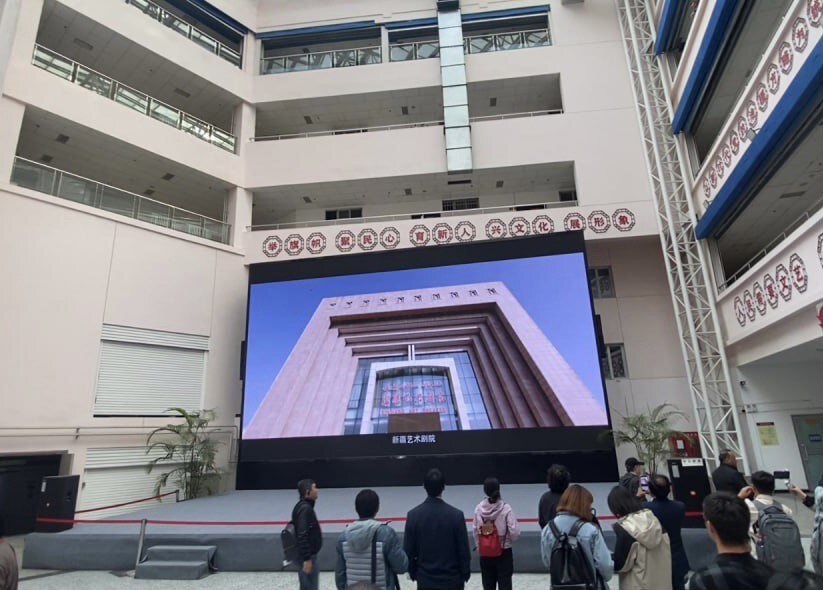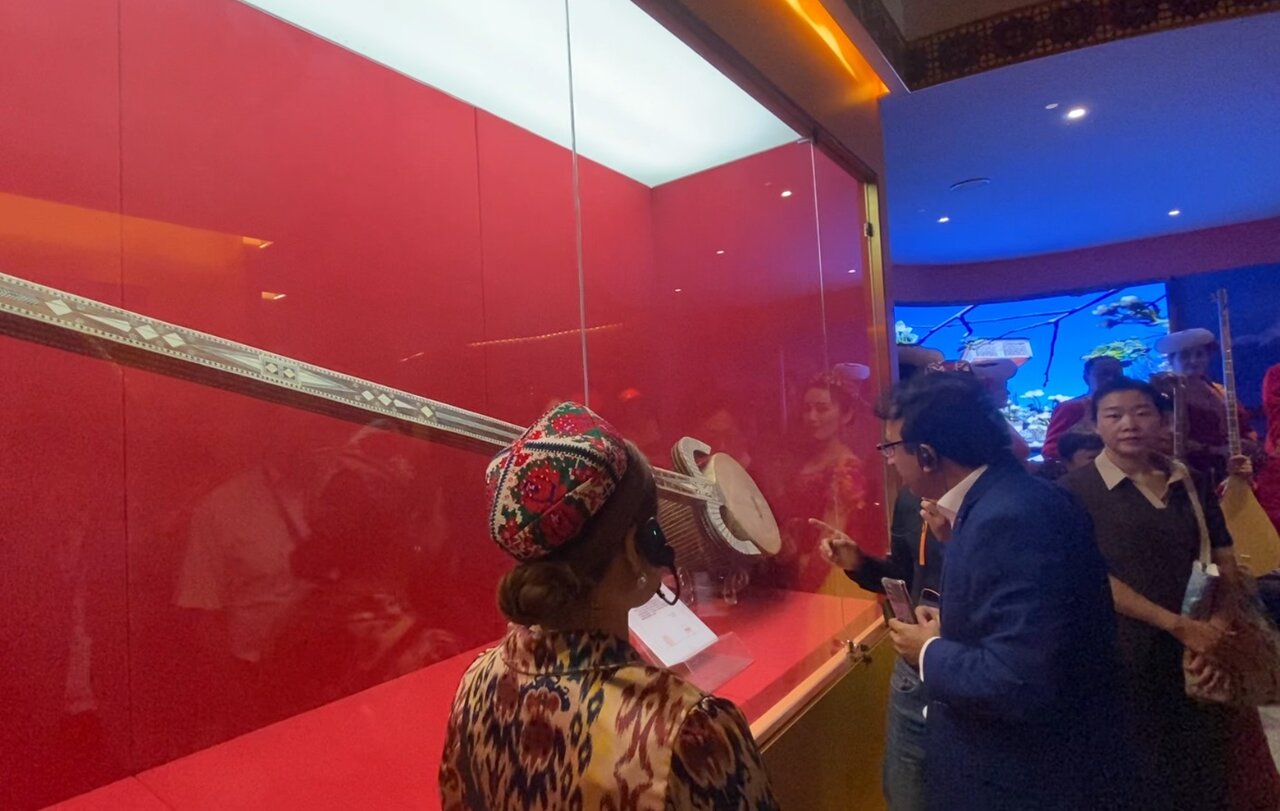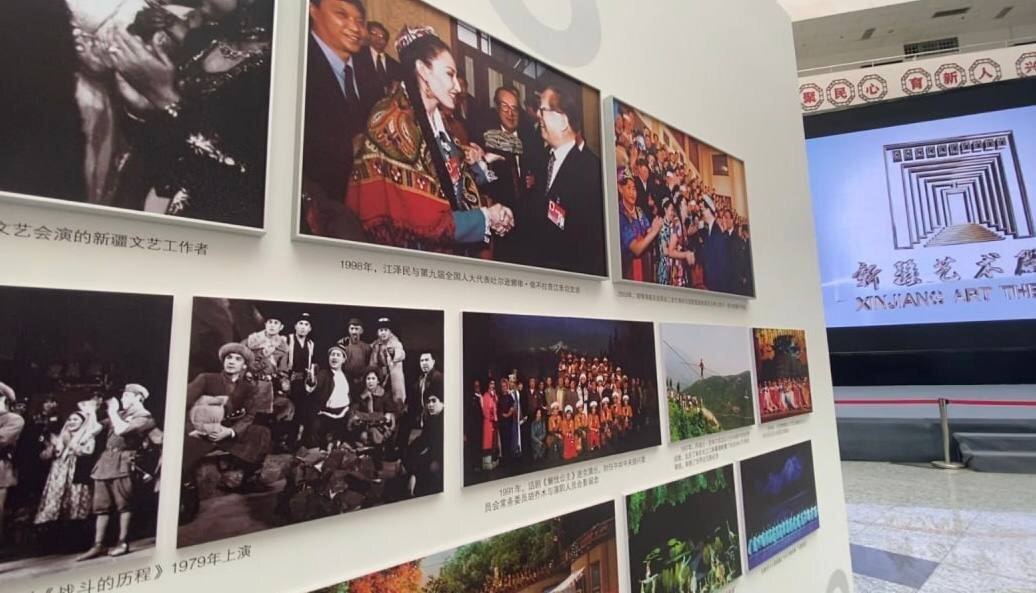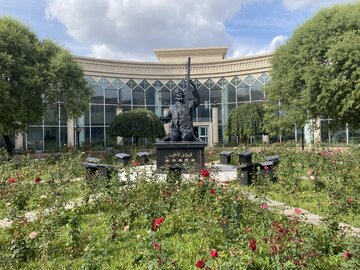Various ethnic cultures live together peacefully in Xinjiang province, which in general, the development of this ancient culture and art contributes to the enrichment of the culture of this region itself and the enrichment of the culture and art of the whole country in general.
The Chinese government, especially during the Xi Jinping era, has paid special attention to the development of the traditional culture and art of the Uyghur people in Xinjiang. This special support is in the forms of granting loans to create businesses based on ethnic culture and art, establishing cultural and artistic centers and houses to hold associated events, dispatching artistic groups to other countries of the world for holding performances, holding various festivals with the presence of other countries and giving subsidies to local artists and entrepreneurs of the art sector. These are all being done as part of the Chinese government backing which provides for the prosperity and development of the Xinjiang region.

In the city of Urumqi, the center of Xinjiang, which has been long the main target of the Western media to bring human rights pressures to China, we went to visit the Xinjiang Muqam Art Theatre together with other journalist invited from other countries. A three-story huge institute with several large performance halls, rehearsals, exhibitions, art classes, meeting saloons and a wide area that was decorated with various art and cultural symbols of the region.
Based on what we saw in Urumqi and other parts of this province, the atmosphere was not policed, suffocating, and in such horrible situation that have been presented and advertised under the name of Uyghur genocide, by the western media. On the contrary, people lived in the most normal way possible, and more than anything, various artistic ceremonies rooted in the rituals and traditions of the Uyghur people of this region could be seen.
Xinjiang Muqam Art Theatre
Xinjiang Muqam Art Theatre is the main hangout for educating, training, conducting, organizing and performing traditional Uyghur art which we visited in this tour. The theater, which was built in 1949, has a large performance hall with 1700 seats and is considered the main cultural - artistic symbol of Urumqi. Some interior areas of the hall were decorated by large oil color paintings by famous painters of the region; pictures of Uyghur music masters playing Dutar, Rubab and other local music instruments, large framed pictures of various Chinese leaders who personally visited the Muqam Theatre, watching the performances; depictions of the famous living and deceased artists of Xinjiang province and some handicrafts of the region. This beautiful decoration turned the theater into a small museum of folk culture.

Having installed a beautiful statue of Turdi Akhon, one of Xinjiang's most famous music artists in the outer area of this center, shows how fitting the name of the center is.
In his extended speech on the topic of "Protection of inheritance and development of the traditional culture of all ethnic groups in Xinjiang", professor Liu Bin, explained how much the government and especially Mr. Xi, care about the indigenous culture and ethnic art of the Xinjiang region, and that Mr. Xi has issued decisive orders to support and invest in this regard.
We observed in the tour that how the cultural and artistic works of the Uyghur people from ancient times, have been well-preserved. As we saw later, many writings, paintings, and handcrafts left over from ancient times related to the Uyghur people were well conserved in the Xinjiang Museum of Anthropology.

Liu Bin told us that the government has also considered supporting the reservation of the language and script of the Uyghurs, and contrary to the propaganda of the West, Islam, Christianity and several other religions can freely be practiced by people, and the only thing prohibited by the government is membership in extremist, separatist and terrorist groups, which, in this regard, there is no difference between Muslims and non-Muslims.
According to Liu, Xinjiang Muqam art theater is responsible for attracting all the artistic and cultural talents of the region. Art students become masters and the masters are empowered to run their workshops or their own art groups in different areas of the province.
Such places like Xinjiang Muqam Art are also safe and open to all art groups. Through this center and other art centers in Xinjiang province, which are scattered in the cities of Kashgar, Yining and Kotan/Hotan, hundreds of art groups have grown and are regularly dispatch to more than 70 countries in the world every year, where they hold various cultural and artistic performances.
Apart from the political, social and cultural goals, this initiative has led to the widespread prosperity of the art economy, the widespread employment of young people and art students, flourishing and be known of culture and art professors and practitioners, and the promotion of Uyghur art all around the world, which is part of a larger collection of Chinese culture and art. Also, every two years, an art festival is held in this center, which is attended by over 50 countries of the world, especially the countries of Central Asia, and it leads to extensive people-to-people exchanges, which Xi Jinping himself has repeatedly reiterated.

What is Muqam?
Liu Bin enthusiastically defined the word “Muqam", as if this word is Chinese, explaining that "Muqam" refers to the performance of indigenous and traditional music and dance of the Uyghur people, which is the narrator of their history and ancient traditions. It combines various artistic elements such as music, dance and storytelling to create a mesmerizing experience for the audience.
At the end of the meeting, I respectfully pointed out that although the word "Muqam" has ancient roots in Persian culture and art, especially Persian music of the Sassanid era, it has long since become one of the common cultural-artistic aspects of this region, which should be strengthened, and we should turn it into a starting point for more ties between different ethnic groups of East and West Asia. Because of many cultural and artistic commonalities between Iranian culture and what I saw in Xinjiang, I actually, felt as if I was at home in Xinjiang and I saw everything very familiar with my appetite.
Without rejecting my words, professor Liu said: what is important is not who these words are or where they come from; but it is how they are preserved, cared for and developed, and my speech today is that, contrary to the claims of the Westerners that China is committing genocide and destroying the culture and customs of the Uyghur people in Xinjiang, you can see how much we care about "Muqam" and its development, and we have made sure that all the ethnic groups living in Xinjiang know that they are Chinese and that they can easily follow their own rituals, methods, celebrations and traditions. They are happy to have their native culture and art and are proud of themselves.
With this field experience in Xinjiang, due to the opportunity that the Chinese government had given to me, I could see what I had already read or knew about Xinjiang and China with my eyes and felt with all my heart. I should say that this was a very sweet and valuable experience for me to see the facts about culture and art, economy, the Belt and Road and its impacts on the well-being of the people of the region and their empowering to achieve a better life.
The way of attracting tourists
The Chinese government measures have attracted millions of people from all over China and from other countries of the world, especially neighboring countries, to travel to this region to see what is going on in different cities of Xinjiang. This tourism not only strengthens the economy of art, but also increases the level of self-confidence and grows the convergence of this province with other parts of China.

In Xinjiang, I realized how Xi Jinping has used Chinese culture and art and traditions to strengthen the foundations of China's cultural soft power against Western culture. Xi Jinping has paid more attention to the issue of culture than of his predecessors, and it can be said that he has well understood that by strengthening the indigenous ethnic culture and art of the Uyghur people in Xinjiang, he can also overcome with problems such as extremism, terrorism and separatism.
After this meeting, when we went to the Urumqi Grand Bazaar and later to other places in Kashgar, Yining, the diversity and colorfulness of people’s life in this region caught the sight. In almost every corner of the Urumqi Grand Bazaar, the old city of Kashgar, different ethnic groups of Uyghurs, Kyrgyz, Kazakhs and other ethnic groups, most of whom Muslims, holding various types of artistic performances. The main characteristics of these performances were colorful local clothes, traditional music instruments, poems and storytelling, local and folklore dances, and the use of calligraphy, pottery and handicrafts, each of which was surrounded by tens or hundreds of locals, or even foreigners as tourists.
A Persian Carpet
When a Chinese journalist asked me, “how did you see Xinjiang?” I explained that facing with such a multiplicity is not strange for me, who comes from Iran, a country full of different ethnic groups. And I went on that it is because of having such a colorful and diverse culture that Iranian carpets are famous in the world, which is a symbol of having sited and intertwined different and sometimes contrasting colors and designs together in the most beautiful and inspiring way possible.

Having welcomed this interpretation I was asked if I use this for explaining Xinjiang as well, and I said yes, here too, the same diversity and colorfulness and mixture of beauties that live together in peace and tranquility can be seen, and make Xinjiang look like an Iranian carpet in my opinion.
By sending various art groups to the countries of the world, especially European countries, in the form of the China -Euro Festival, and inviting elites and journalists from other countries, including Western countries, to this region and attracting foreign tourists, China pursues another major goal, which is to undermine and nullify the anti-Chinese narratives of Western countries, especially Americans, about China in general and the Xinjiang region in particular.
China's Goals
Apart from the statistics provided by China regarding the amount of investment of the CCP on the culture heritage and native traditions of the Xinjiang region, every tourist who visits this region is faced with field observations that do not lie to him/her. The cultural diversity that is alive, dynamic, agile and in flux in this region cannot be denied, and it shows a very careful strategy and huge investment by the Chinese government, which pursues three main goals:
- Strengthening Chinese nationalism
- Facing with western cultural invasion, and
- Overcoming extremism, terrorism and separatism in Xinjiang province
In my opinion, as a matter of fact, China to a large extent has achieved its goals by these efforts, and now is reaping the fruits of this cultural investment.


Your Comment